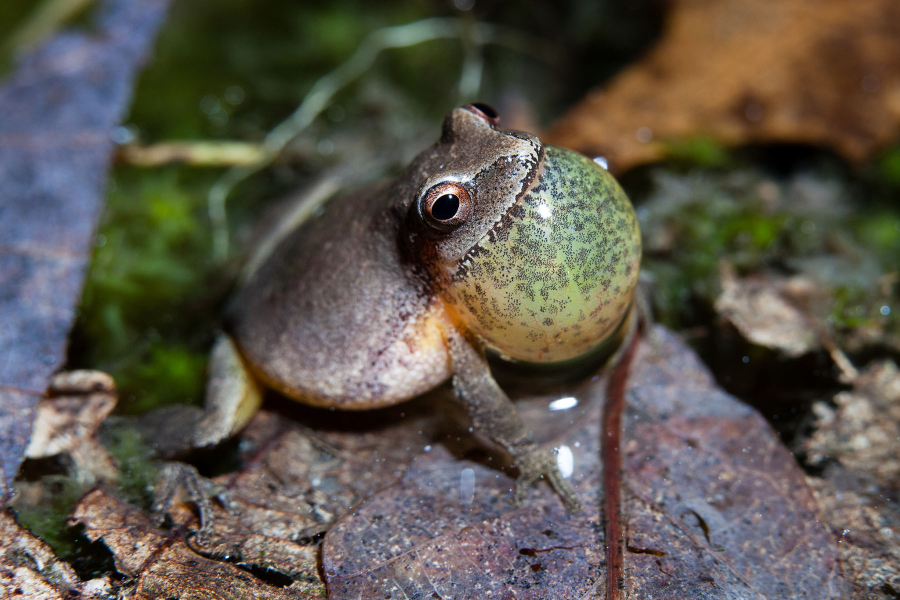Spring peepers perform seasonal serenade
Vernal pools provide temporary habitat to breeding amphibians

A spring peeper’s throat swells as it makes its signature call in a vernal pool at Kings Gap State Park in Thurmont, Pennsylvania, on March 25, 2016. As its name implies, the spring peeper’s “peeping” call is one of the first signs of spring in the Chesapeake region.
Calling the sound a “peep” might make it seem like a small, subdued noise. In actuality, the call has been likened to a car alarm—and when hundreds of frogs sing in a single location, as they often do, the noise can be almost deafening. A high-quality call is extremely important during breeding season, as it influences which mate a female will choose.
In early spring, the arrival of vernal pools spurs peepers to mate. Vernal pools are temporary ponds, fed by snow, rain or groundwater and blanketed in leaves from a healthy forest. They only last for a handful of months each year, but stay wet long enough to host a multitude of breeding frogs, toads and salamanders. Because the pools aren’t directly connected to a waterway, they’re free from the fish that would otherwise prey on amphibian eggs and larvae.
While best-known for their springtime symphonies, spring peepers spend the rest of the year on land. Their dependence on marshy woodlands for habitat makes spring peepers particularly vulnerable to the loss of forests and wetlands. Work by Chesapeake Bay Program partners to conserve land across the watershed provides habitat not only peepers, but other wildlife that live in the region.

Comments
There are no comments.
Thank you!
Your comment has been received. Before it can be published, the comment will be reviewed by our team to ensure it adheres with our rules of engagement.
Back to recent stories